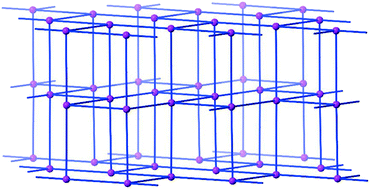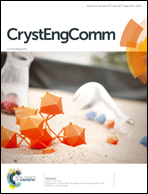An uncommon (5,5)-connected 3D metal organic material for selective and sensitive sensing of nitroaromatics and ferric ion: experimental studies and theoretical analysis†
Abstract
An unexploited pentacarboxylate ligand, 2,5-bis(3′,5′-dicarboxylphenyl)-benzoic acid (H5L), was designed and used for the preparation of metal organic material using Zn2+ as a node. The new compound, {(Me2NH2)[Zn2(L)(H2O)]·0.5DMF}n (1) (DMF = dimethylformamide), has been synthesized and structurally characterized. The topology of the 5-connected anionic framework may be described as (44)(66) (Schläfli symbol) based on {M2(CO2)5} molecular building blocks (MBBs) and L ligands in 1. It has been demonstrated that 1 can act as a fluorescent sensor for highly sensitive detection of nitroaromatics and Fe3+, with a detection limit of 0.54 ppm for 2,4,6-trinitrophenol (TNP) and 0.81 ppm for Fe3+. The possible emission quenching mechanism in the presence of nitroaromatics has been addressed by theoretical calculations.



 Please wait while we load your content...
Please wait while we load your content...